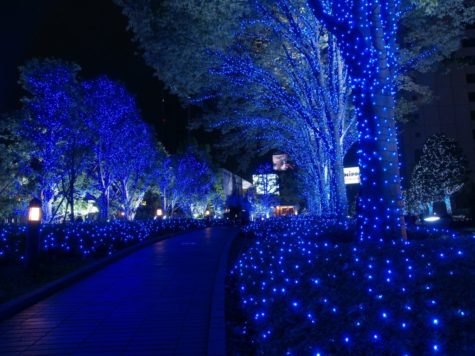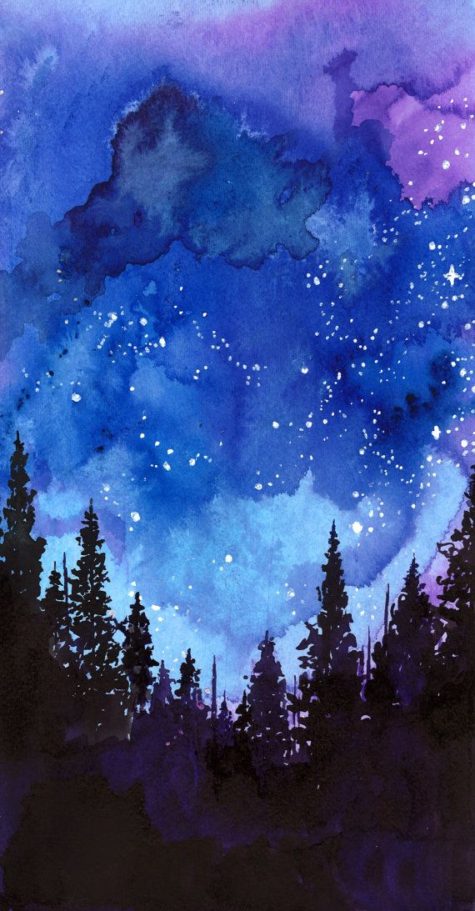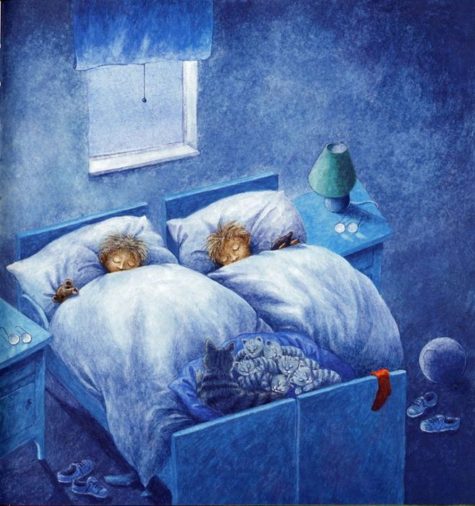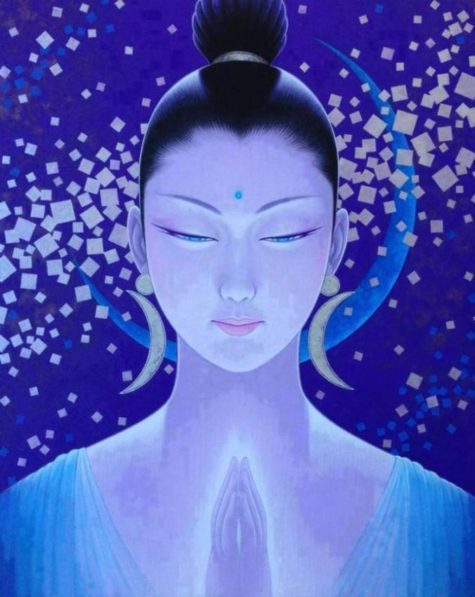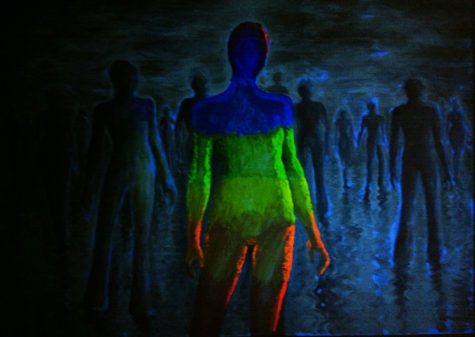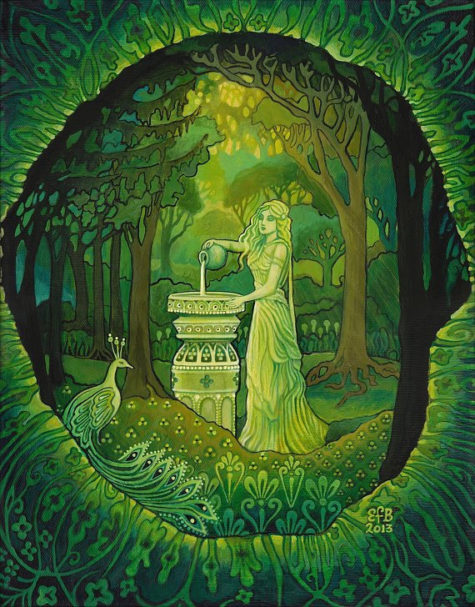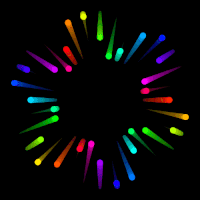Insomnia
How Blue LEDs Affect Sleep
Fluorescent bulbs and light-emitting diodes (LEDs) have taken over lighting because they are more energy efficient and can provide better lighting than incandescent bulbs. They are found in everything from task lighting to televisions to smartphones. But while these bulbs are helpful in many ways, they can also have a negative effect on sleep.
The problem with artificial light
All artificial light, including LEDs, fluorescent bulbs and incandescent bulbs, can interrupt normal sleep patterns. The body’s biological clock works in rhythms that are set by the amount of light and dark the body is exposed to. This is called the circadian rhythm. Circadian rhythms control the timing of many physiological processes. They determine sleeping and feeding patterns, as well as brain activity, hormone production and cell regeneration.
When the body is exposed to only to the natural light of the sun, the hypothalamus area of the brain sets its sleep patterns according to when it is light outside and to when it is dark. Light is detected by the retina, which sends signals to the hypothalamus. When it starts getting dark outside, the hypothalamus signals to the body to start creating sleep hormones, like melatonin, and to drop the human’s body temperature to prepare for sleep, according to the National Sleep Foundation. In the morning, when light is sensed, the body is told to warm up and to produce hormones, like cortisol, that wake the body up.
When artificial light is added to a human’s day, the body’s natural rhythms become confused. The retina can now receive light no matter what time of day it is, so the body doesn’t know when to get ready for sleep. A study published in the Endocrine Society’s Journal of Clinical Endocrinology & Metabolism found that, when compared with dim light, exposure to room light during the night suppressed melatonin by around 85 percent in trials.
Blue light and sleep patterns
Fluorescent and LEDs bulbs create a two-fold problem when it comes to sleep. First, they produce artificial light. Second, they produce blue light.
Blue light wavelengths produced by electronics and overhead lights boost attention, reaction times and mood, according to Harvard Medical School. This can be great for the daytime when the body needs to be alert, but at night it can become a problem.
Research has found that exposure to blue light suppresses the production of melatonin more than any other type of light. It is believed that the shorter wavelengths in blue light is what causes the body to produce less melatonin because the body is more sensitive to this type of light.
“In terms of light and our brains, there is a spectrum of wavelengths that impacts the human circadian system,” said David Earnest, a professor and circadian rhythms expert at the Texas A&M Health Science Center College of Medicine. “Blue light is the most sensitive side of the spectrum.”
A study by the University of Toronto found that those who wore glasses that blocked blue light wavelengths produced more melatonin than those who didn’t during night shifts. Other studies have found that blue wavelengths suppress delta brainwaves, which induce sleep, and boost alpha wavelengths, which create alertness.
Solutions to blue light sleep problems
To get better sleep, it would be best to stop using artificial light altogether, but that isn’t possible in modern times. There are some more reasonable solutions, though.
“To prevent sleeping problems, avoid any exposure to blue light 30 to 60 minutes prior to bed. That means, no TV, tablets, computers or smart phones,” said Dr. Robert Oexman, director of the Sleep to Live Institute. “Ideally, you want your environment to be dimly lit so your body can start naturally producing melatonin.”
Andrew Simon, a naturopathic physician at the Bastyr Center for Natural Health, also suggested changing all overhead lights to full spectrum if possible, and to use some of the new smart home tech solutions to have lights turn off gradually or at a certain time, to help encourage the body’s natural sleep/wake cycle.
If these steps aren’t possible, dimming devices and wearing blue light filtering glasses can help.
Source: Live Science
Healing With The Color Blue
Whenever I feel blue, I start breathing again.
~L. Frank Baum
Overview:
Dr. Edwin Babbitt, in his classic, “The Principles of Light and Color,” states that “The Blue Ray is one of the greatest antiseptics in the world.”
Blue is an all purpose healing color and a great antiseptic and astringent, it discourages disease and disharmony, calms the mind and nerves. Cooling, calming, and protecting, it relaxes the nervous system, helps reduce fever, inflammation and bleeding.
Blue is associated metaphysically with the throat and thyroid gland. Blue-colored light has been shown to reduce blood pressure. Blue calms the autonomic nervous system and is anti-inflammatory. Dark blue affects the pituitary gland, the regulator of sleep. Dark blue also reduces pain and strengthens the skeleton by keeping bone marrow healthy.
Light and sky blues are those most often used in healing work. Blue is good for soothing body, mind and spirit, highly recommended in case of shock. It is very good for treating burns, chickenpox and mumps. In moderation, blue is excellent for emotional healing of stress and anxiety (too much can increase depression and apathy in those so inclined),
The color blue also helps reduce and manage “hot” emotions like anger, impatience, greed or jealousy.
Healing with the color blue:
- Blue is cooling, electric, astringent.
- Good for emotional healing.
- Use a blue light for measles, chickenpox and mumps.
- It can help with self control and in chaotic situations.
- Highly recommended in case of shock.
- Cools down inflammations, fevers, and high blood pressure.
- Stops bleeding.
- Relieves the headaches.
- Calms the mind and nerves.
- Calms strong emotions like anger, aggression or hysteria.
- Brings tranquility.
- Great for insomnia.
- Enhances antiseptic effects
- It is used for stings, itches, rashes and bites.
- Soothing to the eyes.
- Anti-itching.
- Anti-irritation (for instance redness of the skin).
- Anti-stress.
- Soothes suffering.
- It is good for cooling, calming, reconstructing and protecting.
- A great antiseptic and astringent.
- It is very good for treating burns.
- Cooling, calming and protecting.
- It relaxes the nervous system.
- Helps reduce fever, inflammation and bleeding.
- Blue can be used for any type of ailment associated with speech, communication, or the throat.
- Excellent for laryngitis or inflammation of the larynx.
- Also can be used for tooth problems and associated pain and inflammation.
Contra-Indications
- Blue can increase depression, tiredness and sorrow, so its use should be observed carefully and darker shades should be used only moderately.
Note: This post was compiled by Shirley Twofeathers for Color Therapy, you may repost and share without karmic repercussions, but only if you give me credit and a link back to this website. Blessed be.
The Color Blue
There are connoisseurs of blue just as there are connoisseurs of wine.
~ Sidonie-Gabrielle Collette
Blue is the coolest color – the color of the sky, sleep, twilight, and the deep sea. Blue is the color most commonly associated with harmony, faithfulness, and confidence. It is overwhelmingly the most popular color, chosen by almost half of both men and women as their favorite color. It is also commonly associated with the sky, the sea, ice, cold, and sometimes with sadness.
The ancient Egyptians used lapis lazuli to represent heaven. Blue symbolizes the Virgin Mary. A pure blue is the color of inspiration, sincerity and spirituality. It contains a cool vibration that is helpful to communication. Blue is the calming color. That makes it a wonderful color to use in the home, especially for babies. Blue is so soothing that it is a good choice for pajamas. A blue iris means your friendship is very important to me. Wednesday’s color is blue.
Blue gives a feeling of distance. Artists use it to to show perspective. This is a good way to understand the energy of the color blue – it allows us to look beyond and increase our perspective outward. Blue relates to the future in linear time, as it is a faster moving frequency than we experience in the physical. Researchers at Cornell University discovered that applying blue light to the backs of the knees resets the body’s internal clock, eliminating jet lag and the sleep disturbances that accompany shift work.
Blue links with and stimulates the throat chakra. The throat chakra is often referenced as the “power center” and “the greatest center in the body” because it is the primary center of expression and communication, through speech.
The vibration of blue can be used to open energy flow where it is blocked. Using blue to relax will encourage feelings of communication and peace. To help remember a speech, write your notes on blue paper.
Blue light has been found to significantly reduce the pain of arthritis – the longer the exposure the better the results. Blue acts as an antiseptic and cooling agent, and enhances the natural flow of energy. Excellent for inflammations including those of internal organs, also good for cuts and burns.
Note: This post was compiled by Shirley Twofeathers for Color Therapy, you may repost and share without karmic repercussions, but only if you give me credit and a link back to this website. Blessed be.
Light Starvation
“Light is a nutrient much like food,and like food,
the wrong kind can make us ill, and the right kind can keep us well.”
Humans need light of specific intensity and color range to regulate their internal biological clock. Without it, our daily, monthly and annual rhythms become disrupted. A lack of sunlight can lead to ill health with a variety of mental, emotional, and physical symptoms.
How does “light starvation” or “Malillumination” happen?
Working and living indoors: Poorly illuminated environments with inappropriate artificial lighting could have serious health implications. For example, most artificial indoor lighting lacks ultraviolet light (UV), which at the proper intensity is essential to the production of vitamin D and the metabolism of calcium.
Unhealthy artificial light: Most indoor lighting lacks the requisite full-range color distribution and the proper intensity to sustain health and certain functions, such as vitamin D and hormone production. Light’s effect on human mind body health has, until recently, been ignored in architecture, design, and engineering. Both fluorescent and incandescent lights have lots of Red, but are lacking in Green, Blue and Violet. Furthermore, indoor lighting is generally not bright enough, amounting to only 1/20th the intensity of outdoor light in the shade on a sunny day. The amount of light that we receive from 16 hours indoors is dramatically less than the amount we receive from a single hour outdoors.
Negative lifestyle habits: Even in sunny California and Florida, the average individual receives little sunlight in a 24-hour period. The additional interferences we have, such as tinted sunglasses and contact lenses, tinted car windshields, and tinted windows, don’t allow in the health-giving properties of the entire spectrum of light.
Seasons/low light conditions: In winter in the northern hemisphere, the onset of winter depression and seasonal affective disorder (S.A.D.) occurs in late fall and peaks in February. (These symptoms usually wane in early spring, as the days get longer.)
The Symptoms of Light Starvation:
- Irritability
- Fatigue Increased illness – due to lowered immune function
- Insomnia
- Hypersomnia – sleeping too much
- Depression
- Alcoholism
- Suicide
- Vitamin D deficiency
- Calcium deficiency
- A disturbance of bodily rhythms such as SAD, winter depression and other phase shift disorders.
What Light Nourishes:
Light enables us to see, and it plays several vital roles as it enters our eyes and our skin. Light enters the pineal gland (the body’s light meter) via the retina. Its neurotransmitter, melatonin, influences the hypothalamus, which is responsible for controlling many of the endocrine functions that are disturbed in depressed individuals such as sleep and wakefulness, reproductive physiology, mood, and the timing of the biological clock.
Sunlight shining on the skin triggers the production of melanin, a dark pigment that protects the surface of the body. As UV rays from the sun penetrate the skin’s surface layer of melanin, the body’s supply of vitamin D is replenished. Vitamin D is known as the “sunshine vitamin”, and although vitamin D can be obtained from milk and fish, this form is not as biologically effective as the vitamin D produced by sunlight.
Vitamin D3 is a skin hormone called solitrol, which works in conjunction with the pineal hormone, melatonin, to control the body’s response to light and darkness. Solitrol works antagonistically with the melatonin to produce changes in mood and our 24 hour bodily rhythms, as well as affecting our immune system.
Vitamin D enters the blood stream and goes to the kidneys and liver where it plays a key role in the absorption of calcium from foods, as well as the utilization of the mineral phosphorus. Nutritionally oriented physician Dr. Elson Haas states that since vitamin D is intimately related to the metabolism of calcium and phosphorus, it is important to the growth and development of bones and teeth in children. Dr. Haas adds that D3, because of its effect on calcium levels, is important in the maintenance of the nervous system, heart functioning, and blood clotting.
Healing With the Color Violet
The violets in the mountains have broken the rocks.
~Tennessee Williams
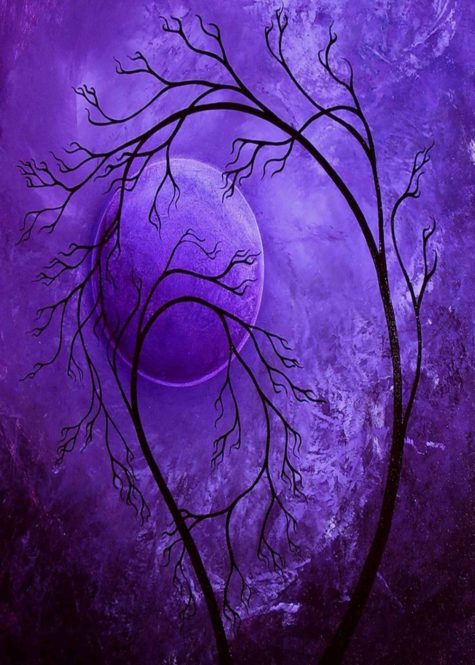 Overview:
Overview:
Violet is at the opposite end of the spectrum from red. It is a deeply healing and cleansing color, soothes pains in body, mind and spirit. This color is known as one of the “cool” colors. The color violet has a very calming effect on us and is, therefore, very helpful for those people experiencing sleep difficulties or stress. However, it can be contra-indicated for those suffering from depressive disorders.
Violet light slows down an over-active heart; stimulates the spleen and the white blood cells (immunity). Brings sleep. Soothes mental and emotional stress. Decreases sexual activity. Decreases sensitivity to pain. Helps in detoxification. Exposure to violet light is good for mental and emotional problems, rheumatism, epilepsy, deep tissue work, and bones.
Healing with the color violet:
- Good for mental disorders, the nervous system, baldness and female complaints.
- Helps with pain, is used in deep tissue work and to heal bones, suppresses appetite.
- Can promote inner peace.
- Good for migraines, analgesic, stimulates the immune system.
- Helps with spiritual healing, inner balance, a tranquilizer, promotes sleep. Sedates and subdues.
- Rebuilds the energy body template.
- Used sparingly, violet can be good for mental and nervous disorders and emotional disturbances.
- Maintains potassium balance, reduces hunger.
- Purifies the entire system.
According to Dinshah Ghadiali’s Spectro-Chrome Therapeutic System, violet light demonstrates the following qualities:
- Splenic Stimulant
Increases the Functional Activity of the Spleen - Cardiac Depressant
Decreases the Functional Activity of the Heart - Lymphatic Depressant
Decreases the Functional Activity of the Lymphatic Glands for Nutrition. - Motor Depressant
Decreases the Functional Activity of the Motor Nervous System, which energizes the Muscles into Motion. - Leucocyte Builder
Builds the White (truly the Violet) Corpuscles in the Spleen
Contra-Indications:
- Overuse can be tiring
- Do not use for depression, use green or blue instead.
Violet is balanced by the color yellow.
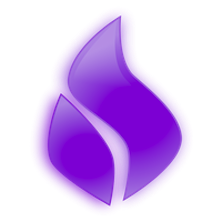 The Violet Flame
The Violet Flame
The Violet Flame (also called the violet fire) is a unique spiritual energy that can help you in all areas of your life. Lots of people use the mystical image of the Violet Flame which represents the light of divine freedom.
It is used in cleansing, protection, meditation, and to burn off karma from other lifetimes. It can heal emotional and physical problems, improve your relationships, help you to grow spiritually, or just make life easier.
More information on the Violet Flame can be found at:
Note: This post was compiled by Shirley Twofeathers for Color Therapy, you may repost and share without karmic repercussions, but only if you give me credit and a link back to this website. Blessed be.
Healing With The Color Green
Absolute green is the most restful color, lacking any undertone of joy, grief, or passion. On exhausted men this restfulness has a beneficial effect, but after a time it becomes tedious. ~Wassily Kandinsky
Overview:
Green is the color of the heart chakra. It has a calming effect, especially in inflamed conditions of the body. It is soothing to the nervous system. It is a great healer. It builds muscles, bones and other tissue cells. Its complement is magenta.
Green is cooling, soothing, and calming both physically and mentally. If you are exhausted, green initially has a beneficial effect, but after a time, it becomes tiring. Green acts upon the sympathetic nervous system. It relieves tension in the blood vessels and lowers the blood pressure. It acts upon the nervous system as a sedative and is helpful in sleeplessness, exhaustion, and irritability.
Green strongly affects the heart chakra, and it is balancing to the autonomic nervous system. It can be applied beneficially in cardiac conditions, high blood pressure, ulcers, exhaustion, and headaches. Green harmonizes, life-giving, calms the mind, nerves, fever, and acidity; balances the metabolism, stabilizes the weight, tones liver and spleen; and benefits the pituitary gland.
Healing with the color green:
- Green stimulates growth and is good for helping heal broken bones.
- Green is a muscle and tissue builder.
- Can dramatically assist with easing pain, promotes rapid healing of all kinds.
- Green is a disinfectant, germicide, antiseptic and bacteriocide.
- Green is used during pregnancy and labor because of its soothing and healing properties.
- Green provides an essential nourishment for the body, the spirit and the heart.
- Green is an aphrodisiac and a sex tonic.
- Helps the digestive system, relieves tension.
- It is good for shock and anxiety.
- Green dilates the capillaries and produces a sensation of warmth.
- A calm green light is an excellent remedy for headache and neuralgia.
- Green affects blood pressure and all conditions of the heart. Helps control the blood pressure (light green for high blood pressure and dark green for low blood pressure).
- Green helps with relaxation and can be effective for insomnia.
- Assists with healing past trauma and eases the impact of troubled memories.
- The olive green shade can help us work positively with our emotions, olive is cleansing and disinfectant, it can be used to heal and soothe, to regenerate and to gain awareness and understanding of situations.
- Green has both an energizing effect and a moderating or soothing effect.
- It cures hormonal imbalances.
- Stimulates growth hormone and rejuvenation.
- Cleans and purifies from germs, bacteria and rotting material.
- Harmonizes the digestion, stomach, liver, and gall bladder.
- Has a healing effect on kidneys.
- Increases immunity.
- Builds up muscles, bones and tissues.
- Stimulates inner peace.
- Strengthens the nervous system.
- Green in any form is one of the finest tonics for tired nerves. The shade or chroma should be bright and clear, but much will depend on individual preferences.
Specific treatments and recommendations using green:
- For low blood pressure focus the green light over the heart for half an hour treatments and drink the green solarized water at hourly intervals between meals in half a glass dosages. Eat freely of green salads.
- For high blood pressure follow the same treatment but use a paler green color.
- Neuralgic headaches are often relieved by just looking at the green light.
- Sitting in green light for an hour at a time will refresh exhausted nerves and aid in optimistic thinking.
- Ulcers can be relieved by the green ray treatment given over a long period of time. As they are caused by fear, anger, criticism and antagonism, the opposite of these emotions built in through the use of compassionate green will heal them.
- Influenza requires both the green and blue light treatment, as do mucus fevers, whooping cough and croup.
- Colds in the head yield to green solarized water and green light, sometimes with the help of indigo.
- Green can be used as an aphrodisiac and sex tonic. It is very useful in stimulating sex glands and will be found equally helpful to men and women. It is the color of youth, the springtime of the year when vegetation shows its greatest growth and vigor.
Contra-Indications:
- Too much green can deepen depression and social withdrawal in some who are already so inclined.
- Some people caution that green should not be used in treatment of cancer because of its association with growth.
- It is not to be used where there is anemia or lack of vitality.
Note: This post was compiled by Shirley Twofeathers for Color Therapy, you may repost and share without karmic repercussions, but only if you give me credit and a link back to this website. Bright Blessings.
